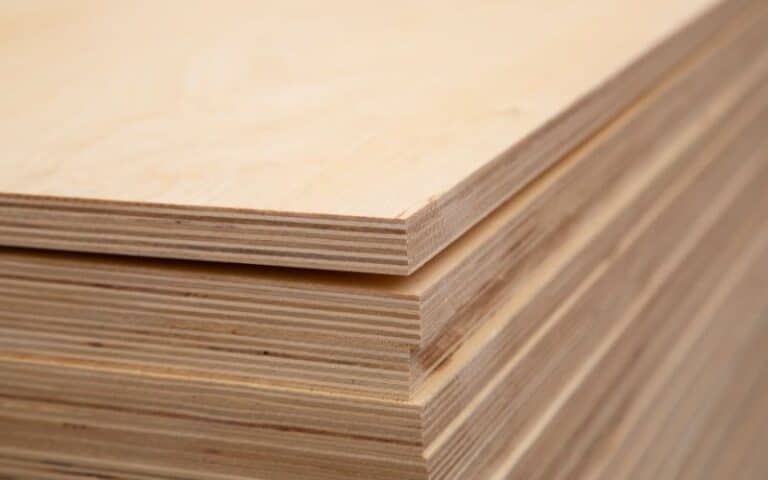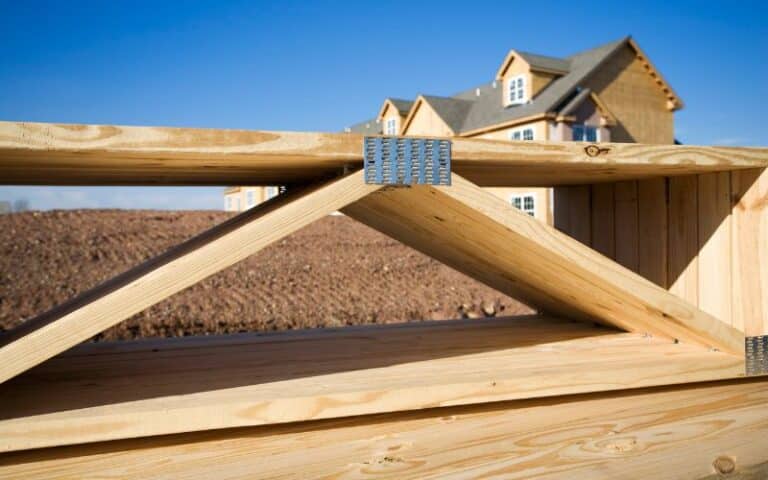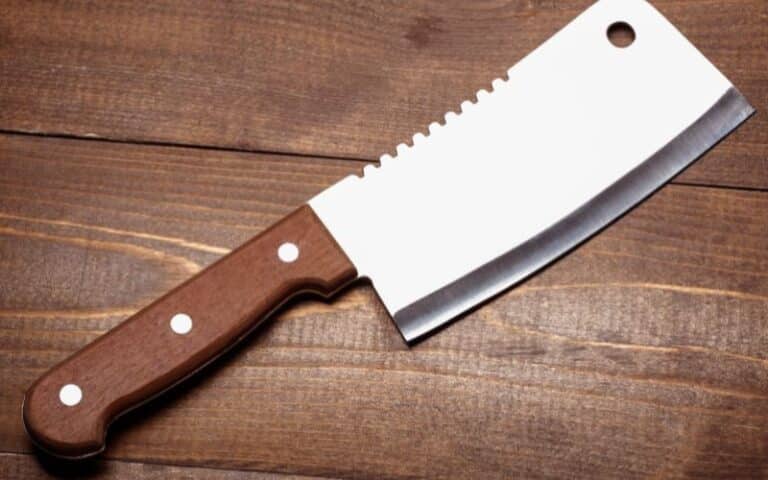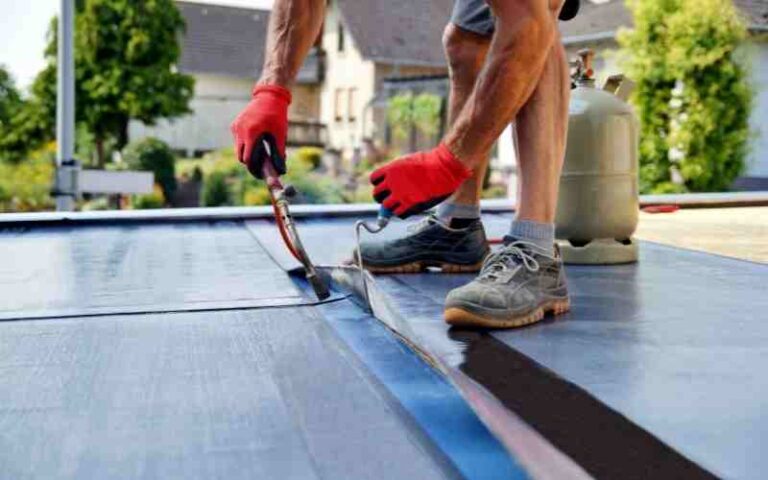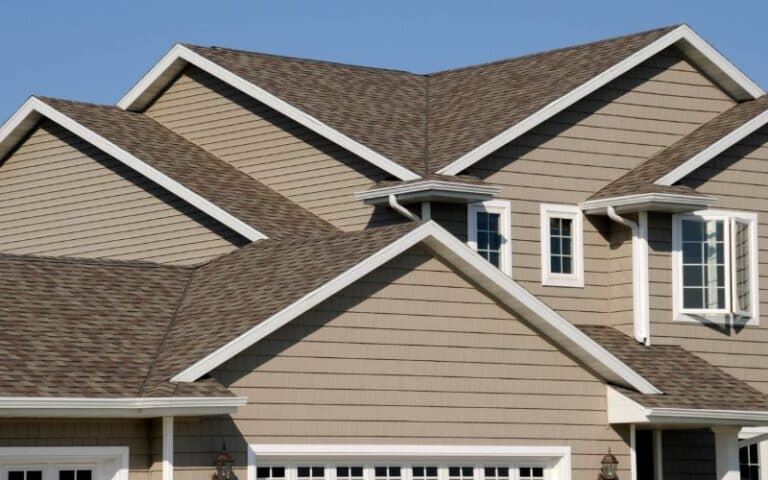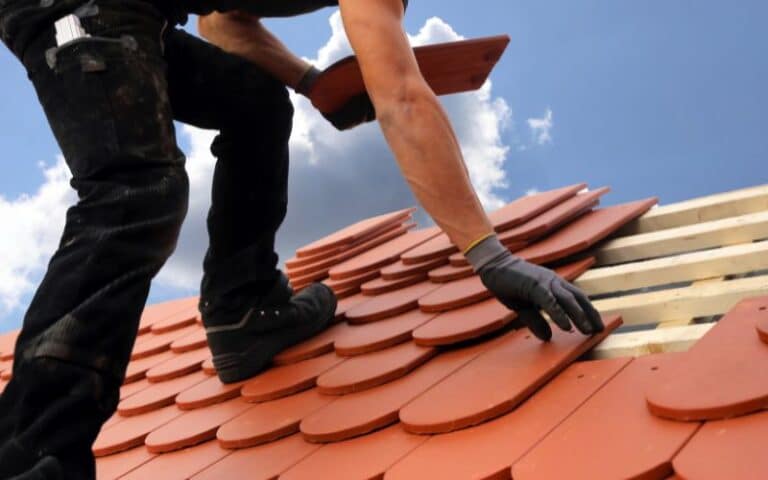You need to have a roof over your head, either literally or figuratively. Shingles are made from wood, asphalt, plastic, metal, and flagstone – although it’s also made of compound materials like fiber cement.
The kind of shingles you use for your roof will determine the style and look your building will possess.
Due to the affordability and less skill required for shingles installation, several homeowners go for this option rather than the metal roofing.
However, asphalt shingles are the commonest of all shingles due to their efficiency in upholding buildings.
However, curiosity lace the topic of installing wet shingles or even if shingles get wet – which results to “Can Shingles get wet?”
Yes, shingles can get wet. The materials used in the production of Shingles can rot during continuous heavy rainfall, thus leading to leaks in the roof. Hence, you should consider the type of shingles you plan on using for the building.
Ready for a Roofing Quiz?
Do Shingles Get Wet?
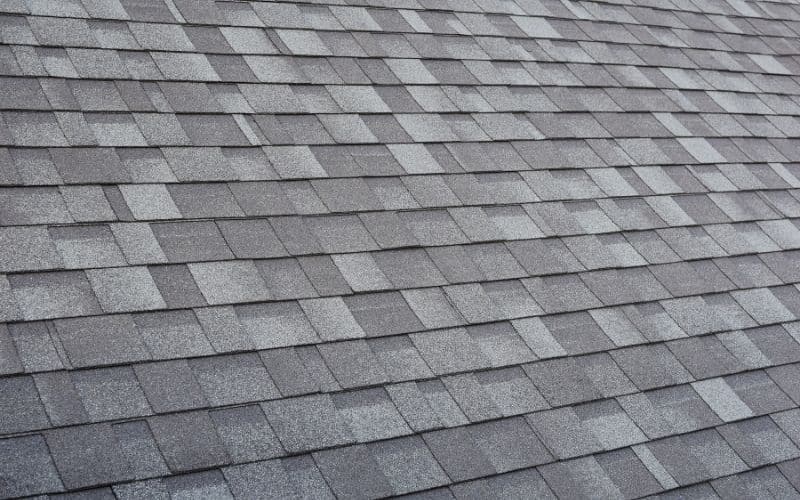
Shingles get wet during heavy rainfall and thunderstorms, which allow water to seam past the roofing felt and plywood.
As a result, shingles installation is quite different as some shingles are installed on the lath strap while others need sheeting before installation.
Also, it would be best if you chose shingles based on their fire rating.
Combustible shingles like wood and organic-asphalt shingles are less used, while non-combustible shingles like fiberglass-asphalt are preferred.
Shingles are installed over one another with a fastener holding them together – fasteners can be staples or roofing nails.
They’ll prevent the shingles from being blown off easily during windstorms and thunderstorms.
Moreover, there are several reasons why Shingles roofing gets wet despite the roofing felt and other materials holding them.
Reasons why Shingles get Wet
#1. Wrong Installation Process
The installation process of Shingles can either make or mar your roofing process. Shingles are installed in stacks, so it’s necessary to make sure all are installed perfectly.
Faults like excessive overhang, wrong tar sealing, and improper nailing can pave the way for leaks in the shingles.
As the leaks occur, they dampen the roof sheathing, then damage the shingles, resulting in the gradual destruction of the roofing.
#2. Roofing During Rain and Other Wet Weather Conditions
The installation of wet shingles can result in the accumulation of microorganisms that will decrease the lifespan of the roofing material.
Besides, roofing while it rains can dampen the roof sheathing, which connects to the shingles.
#3. Extreme Weather condition
Even though roofing felt is placed above shingles, extreme wet weather conditions can result in wet shingles.
Weather conditions like heavy rainfall, thunderstorm, ice dams, and snow can get shingles wet over a long period.
#4. Hot Weather Condition
Despite popular belief, Shingles are not directly affected by rain- the sun also heats shingles. Shingles usually have a life span of more than twenty years.
Thus, they experience both hot and cold weather conditions. Hot weather conditions also affect shingles.
Taking wood shingles, for instance, contains natural oil in the cellulose structure of the wood.
Hence, with time spent in the hot sun, the natural oils melt and are washed off by the rain. Thus, the shingles’ quality decreases and makes them more susceptible to wetness.
#5. Wet Roofing Felt
Roofing felts are made from fiberglass or polyester fibers. It acts as a moisture barrier for roof shingles, so it’s placed above them. This roofing material tends to repel water, although it can absorb some.
However, the roofing felt can be wet and still function as it should, but it can break down under extreme hot and cold weather conditions.
Thus, when the roofing felt is wet, it can cause the shingles also to get wet.
How to Protect Shingles?
Shingles are necessary roofing materials you must maintain. Even though it can wear out and get wet, here are some tips to protect it.
Protect the roofing shingles to ensure not only peace of mind but also a long life for your roof.
Below are some tips to protect your roof shingles.
#1. Use Adhesives and Fasteners
Roof shingles begin to curl or bend after some time. You can therefore protect against further damage by using adhesives and fasteners.
Adhesives like roof tar are perfect for fixing the curled shingle or other tears in the roofing felt. Likewise, you can use roofing nails and staples to hold shingles together and prevent leaks.
In addition, it’s a good idea to coat each roofing nail with cement or silicone, as this will prevent leaks from entering the Shingles.
#2. Periodic Roof Cleaning
Cleaning your roof once in a year or two is a good way to project roof shingles.
Of course, extreme weather conditions are unavoidable, but you can clear fallen leaves or tree branches to maintain the roof’s integrity. You may read to know how to maintain TPRO RV Roof.
Also, a broom or power washer can do the job effectively.
#3. Refrain From Installing Roofs During Rain
It’s common knowledge that shingles get wet, which is possible when beaten by the rain. So, shingles installation during rain is a fast way of dampening the roof sheathing.
However, what will you do if the rain starts during the installation? You can prevent this by:
- First, check the weather forecast before roof installation.
- Stop the installation and cover the roof till the rain stops
- Cover the roof with loaded tarps, especially when the roofing felt is absent.
#4. Check Shingles Seals Regularly
Checking your shingles is important to protect them from windstorms or other bad weather conditions. These checks will show you whether there are any cracked seals or tears present on your roof.
Additionally, roofing cement can keep shingles in place and keep them from being blown away by the wind.
#5. Use a Reliable Shingle Material
Shingle is made from several materials so that you can choose the best and most compatible shingle for your building.
In addition, selecting a reliable shingle will prevent dampened roof felt and sheathing without additional costs.
#6. Invest In Metal Roofing
Singles are pretty affordable and easy to install when compared to metal roofing.
Metal roofing, however, is more environmentally friendly, more long-lasting, and prevents heat from being transferred.
Conclusion
Shingles are made of various materials and are necessary during roof installation. Shingle felt do get wet, and this happens in several ways.
Your roof can get damaged if your shingles get wet, which can cause problems for you. Thus, the protection of roof shingles is crucial.
This article will show you what you should know about shingles felt getting wet, so check it and find solutions to your roofing concerns.

